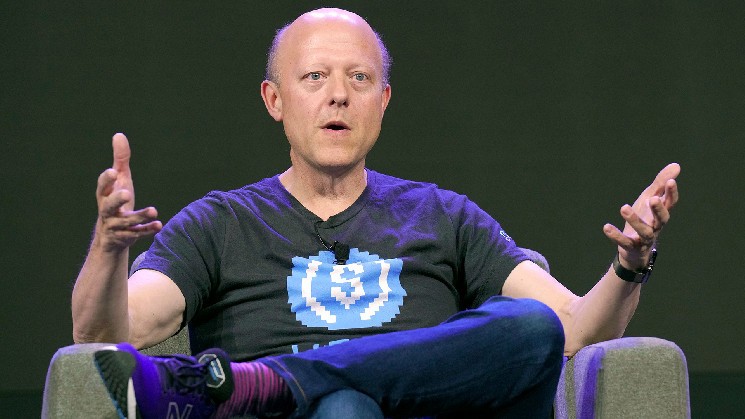USDC Boasted Transparency but It Didn’t Help When Silicon Valley Bank Got Into Trouble

The weekend of March 10, 2023, was a profound test of how well stablecoins hold up under pressure. Now that everything has settled, some odd lessons have been passed on, namely: Transparency doesn’t seem to be a good thing. And forget about prudent management of reserves – it’s just not worth it.
Opacity and sloppy reserve management win the day. Or, at least, so it would appear.
Leading up to Friday, March 10, the issuer of second-largest stablecoin USD coin (USDC), Circle, was probably the industry’s most transparent issuer.
J.P. Koning, a CoinDesk columnist, worked as an equity researcher at a Canadian brokerage firm and a financial writer at a large Canadian bank. He runs the popular Moneyness blog.
It provided daily updates to investors through its BlackRock-managed money market fund, which backstops the stablecoin. On top of that, Circle had just adopted the New York Department of Financial Services’ guidance for stablecoin transparency, which required two attestation-of-reserves tests each month.
In contrast, Circle’s arch-competitor, Tether, which publishes attestation reports on a less-frequent quarterly basis, lagged far behind on transparency.
To boot, in its attestation reports Circle disclosed all sorts of useful information to users, such as each individual Treasury bill’s CUSIP number and where it banks. On that list was Silicon Valley Bank.
It was the last bit of data – Circle’s banking relationships – that seems to have caught everyone’s attention that Friday. After experiencing a run through most of the week, Silicon Valley Bank shares were halted at 9:30 a.m. local time after plunging 62% in premarket trading. Just before noon, the Federal Deposit Insurance Corporation (FDIC) announced that it would be shutting the bank down.
Keen-eyed social media commentators scanning Circle’s disclosures noticed the mention of deposits held at Silicon Valley Bank. Tweets were issued.
Read more: Anna Baydakova — Why Stablecoin USDC’s Unstable Weekend Matters
They certainly had cause for concern. When a bank fails and the Federal Deposit Insurance Corporation (FDIC) takes it over, depositors are only protected up to $250,000 per account. Anything above that amount is at risk. The implication was that if Circle had funds stuck at Silicon Valley Bank, it could suffer big losses. That meant potentially being insolvent. And that raised the possibility that USDC holders might not be made whole.
Social media began to demand a statement out of Circle. CoinDesk picked up on Circle’s Silicon Valley Bank problem after lunch. Curve’s massive 3pool, an important source of stablecoin liquidity, began to be drained as fearful traders swapped their USDC for USDT. By that evening, 3pool was empty and Binance, the world’s largest crypto exchange by trading volume, suspended 1:1 conversions between Binance USD (BUSD) and USDC, indicating a significant amount of stress in the market.
By 7 p.m. ET, a slight USDC depegging from the U.S. dollar occurred on trading markets, and after 10 p.m. Circle finally issued a statement. It revealed that $3.3 billion of USDC’s reserves was in limbo at Silicon Valley Bank. The market was stunned. USDC’s price began a sickening plunge to below 90 cents.
The irony of this is that neither of Circle’s competitors, Tether and Paxos, disclose where they bank. And so commentators on social media didn’t have enough dirt on Tether and Paxos to start asking questions. While USDC collapsed on exchanges, the prices of the Tether and Paxos stablecoins held solid.
Read more: JP Koning — How Tether Can Be a More Stable Stablecoin
Had Circle been as opaque as its competitors, no one would have known that Silicon Valley Bank was its banker and the weekend run on USDC probably would never have occurred.
The lesson would seem to be: Don’t be transparent or, if you need to be transparent, don’t be transparent about your shortcomings.
How might Circle have managed its reserves differently?
Paxos, which issues the Paxos dollar (USDP) stablecoin and, until recently, BUSD, offers some cues. According to the Paxos attestation reports on USDP, Paxos keeps hundreds of millions worth of deposits with banks, but all of those deposits are insured.
It bypasses the $250,000 limit in two ways.
First, some of Paxos’ deposits are invested through placement networks. The way this works is that Paxos’ bank farms money out to other partner banks in $250,000 blocks. Each of these blocks is completely covered by FDIC insurance. Although there are 4,333 FDIC-insured banks in the U.S., providing a theoretical coverage ceiling of $1.08 billion, in practice Paxos only uses deposit networks for part of its deposit balance.
For the remaining unprotected part, Paxos has contracted with an insurance company to be covered by private deposit insurance. Of the $270 million in cash reserves used to back USDP going into the crisis, $72 million was privately insured.
And that, folks, is how to prudently manage large cash balances. It’s a pain. You can’t just casually stash your billions at a bank; you’ve got to go out of your way to properly secure it.
Which leads us into the second irony. If it didn’t pay for Circle to be transparent, it also didn’t pay for Paxos to be prudent.
On Sunday evening, March 12, the FDIC announced that the $250,000 limit on insurance would be waived. All deposits held at Silicon Valley Bank would be extended a blanket guarantee. Circle’s $3.3 billion was safe. In moments, the price of USDC rocketed back up to its $1 peg.
The crypto sector had just benefited from its first federal bailout, and not a small one at that. According to FDIC, the 10 largest deposit accounts at Silicon Valley Bank held a combined $13.3 billion, implying that Circle was the largest beneficiary of the bailout.
The moral of this part of the story is that the government’s official cap of $250,000 was never very serious; unofficially, FDIC protects everything. Paxos’ careful deployment of private insurance and deposits networks seems to have been a waste of time and resources, and its competitors’ «don’t think, just deposit» strategy the right one.
In the aftermath, Circle now advertises USDC as «a stablecoin with GSIB cash.» That means no longer keeping a big chunk of its cash reserves at mid-size banks like Silicon Valley Bank but lodging most of it at Bank of New York Mellon, a global systemically important bank, one almost certain to benefit from a bailout should it fail. That also means Circle probably won’t bother going through the process of negotiating private deposit insurance.
As for Tether, which issues the least transparent of the big stablecoins going into March 10, it wasn’t terribly prudent, either. Its public attestation reports give no indication that it routes its $5 billion or so in cash through deposit networks, nor does it resort to non-FDIC insurance. It fully absorbs the risk of its bankers going bust.
Yet, the amount of USDT in circulation has exploded by around $9 billion, or 11%, since that weekend.
On a long enough timeline, another significant stablecoin test, like the one that faced USDC, is inevitable. The reasons for the next one will be difficult to predict, and likely different from the last one. While opacity and a nonchalant approach to reserve management may not have been punished this time around (indeed, they seem to have been rewarded), if issuers internalize these lessons, then the next stablecoin crisis will only come sooner, and at a much larger scale.






 Bitcoin
Bitcoin  Ethereum
Ethereum  Tether
Tether  USDC
USDC  TRON
TRON  Dogecoin
Dogecoin  Cardano
Cardano  Bitcoin Cash
Bitcoin Cash  LEO Token
LEO Token  Chainlink
Chainlink  Stellar
Stellar  Litecoin
Litecoin  Hedera
Hedera  Monero
Monero  Dai
Dai  OKB
OKB  Cronos
Cronos  Ethereum Classic
Ethereum Classic  Gate
Gate  Cosmos Hub
Cosmos Hub  VeChain
VeChain  Algorand
Algorand  KuCoin
KuCoin  Stacks
Stacks  Tether Gold
Tether Gold  Zcash
Zcash  Theta Network
Theta Network  IOTA
IOTA  Tezos
Tezos  TrueUSD
TrueUSD  NEO
NEO  Polygon
Polygon  Decred
Decred  Dash
Dash  Ravencoin
Ravencoin  Zilliqa
Zilliqa  Qtum
Qtum  Synthetix Network
Synthetix Network  0x Protocol
0x Protocol  Basic Attention
Basic Attention  Siacoin
Siacoin  Holo
Holo  DigiByte
DigiByte  Nano
Nano  Enjin Coin
Enjin Coin  Status
Status  Ontology
Ontology  Waves
Waves  Hive
Hive  Lisk
Lisk  Pax Dollar
Pax Dollar  Steem
Steem  BUSD
BUSD  Numeraire
Numeraire  NEM
NEM  Huobi
Huobi  OMG Network
OMG Network  Bitcoin Gold
Bitcoin Gold  Ren
Ren  Augur
Augur  HUSD
HUSD  Bitcoin Diamond
Bitcoin Diamond